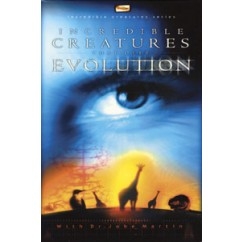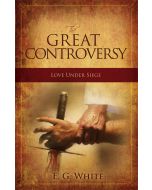by Charles L. Tucker
Slavery has left a permanent impression upon the conscience of America. It also created a terrible cancer that wounded the country’s heart and soul for generations in both the North and the South. The land of the free, as we now know it, was not always so. Countless men and women were violently taken from their families and thrust into the throes of hard labor, unfamiliar surroundings, and abuse.
Days and nights were frequently filled with inconsolable mourning. Still, many experienced life in a way that their slave masters considered normal. The slaves cared for their master’s children, mended their clothing, and prepared their food. Ironically, they became the backbone of their masters’ families.
In Tears That Changed a Nation, you will learn the true story of our nation’s sordid past through the experiences of a remarkable former slave woman. Known as Aunt Minty, she lived 111 years and never learned to read nor write.
At the time Arminta O’Banion was born in January 1788, slavery was already established in America. The first cargo ship of thirteen Africans arrived in St. Mary’s City in 1642, and in 1664, Maryland legalized slavery. In 1783, Maryland prohibited the importation of slaves. The Maryland Gazette denounced the inequality in newly formed America, which promoted liberty and freedom while enslaving thousands.
See Aunt Minty’s life as being unusual, rather than a reflection of the lives of many other slave women. See through her the events and personages that caused the shedding of tears that rendered changes in the nation. See her long life as she remembered it while picking up her wood chips along the shoreline of the Ohio River. See her view of life before and after the Civil War.
Experience her life with her first master, Edmund Randolph, one of the Founding Fathers who was responsible for a motion that would later removed the word “slavery” from the U.S. Constitution. Learn of her recollections of others she served such as, General Green Clay.
Learn what it was like to finally experience freedom and not know what to do with it. Minty wondered how her family would be accepted in the white society. They had no home of their own. All of her children, born before their emancipation, were still slaves of General Green. How could they leave them? Would society respect them? Would they respect themselves?
Experience her story now …
2. Minty’s First Master, Edmund Randolph
3. Minty, a Slave, Yet Not a Slave
4. Slave Ships (Minty Learns about Her Ancestors)
5. Minty’s Young Childhood
6. A New Chapter for Minty
7. A Changes for Minty: Slave Breeding
8. Minty’s New Master, Green Clay
9. Minty and Lewis Off to War
10. Minty and Lewis Set Free
11. Minty, Domestic of Jesse Grant
12. Minty and Senator Morris
13. Minty and James G. Birney
14. Church Involvement
15. Minty and the Beecher Family
16. Rankin and Parker
17. The Underground Railroad, Levi Coffin
18. Dismal Swamp
19. Antebellum Years
20. Abraham Lincoln
21. The Civil War
22. Civil War Camp Life
23. Civil War Diseases and Treatment
24. Letters from the Camps
25. Animals in the Civil War
26. Stephen Foster and the Civil War
27. Lincoln’s Assassination
28. The Freedmen’s Society
29. Life for Minty after the Civil War
ISBN: 978-1-63452-774-3
Pages: 240, hardcover
Dimensions: 8.75 x 9.25 x 1 inches
An Incredible and True Story of Trials, Perseverance, and Hope
Slavery has left a permanent impression upon the conscience of America. It also created a terrible cancer that wounded the country’s heart and soul for generations in both the North and the South. The land of the free, as we now know it, was not always so. Countless men and women were violently taken from their families and thrust into the throes of hard labor, unfamiliar surroundings, and abuse.
Days and nights were frequently filled with inconsolable mourning. Still, many experienced life in a way that their slave masters considered normal. The slaves cared for their master’s children, mended their clothing, and prepared their food. Ironically, they became the backbone of their masters’ families.
In Tears That Changed a Nation, you will learn the true story of our nation’s sordid past through the experiences of a remarkable former slave woman. Known as Aunt Minty, she lived 111 years and never learned to read nor write.
At the time Arminta O’Banion was born in January 1788, slavery was already established in America. The first cargo ship of thirteen Africans arrived in St. Mary’s City in 1642, and in 1664, Maryland legalized slavery. In 1783, Maryland prohibited the importation of slaves. The Maryland Gazette denounced the inequality in newly formed America, which promoted liberty and freedom while enslaving thousands.
See Aunt Minty’s life as being unusual, rather than a reflection of the lives of many other slave women. See through her the events and personages that caused the shedding of tears that rendered changes in the nation. See her long life as she remembered it while picking up her wood chips along the shoreline of the Ohio River. See her view of life before and after the Civil War.
Experience her life with her first master, Edmund Randolph, one of the Founding Fathers who was responsible for a motion that would later removed the word “slavery” from the U.S. Constitution. Learn of her recollections of others she served such as, General Green Clay.
Learn what it was like to finally experience freedom and not know what to do with it. Minty wondered how her family would be accepted in the white society. They had no home of their own. All of her children, born before their emancipation, were still slaves of General Green. How could they leave them? Would society respect them? Would they respect themselves?
Experience her story now …
Tables of Contents
1. Meeting Minty2. Minty’s First Master, Edmund Randolph
3. Minty, a Slave, Yet Not a Slave
4. Slave Ships (Minty Learns about Her Ancestors)
5. Minty’s Young Childhood
6. A New Chapter for Minty
7. A Changes for Minty: Slave Breeding
8. Minty’s New Master, Green Clay
9. Minty and Lewis Off to War
10. Minty and Lewis Set Free
11. Minty, Domestic of Jesse Grant
12. Minty and Senator Morris
13. Minty and James G. Birney
14. Church Involvement
15. Minty and the Beecher Family
16. Rankin and Parker
17. The Underground Railroad, Levi Coffin
18. Dismal Swamp
19. Antebellum Years
20. Abraham Lincoln
21. The Civil War
22. Civil War Camp Life
23. Civil War Diseases and Treatment
24. Letters from the Camps
25. Animals in the Civil War
26. Stephen Foster and the Civil War
27. Lincoln’s Assassination
28. The Freedmen’s Society
29. Life for Minty after the Civil War
ISBN: 978-1-63452-774-3
Pages: 240, hardcover
Dimensions: 8.75 x 9.25 x 1 inches


















